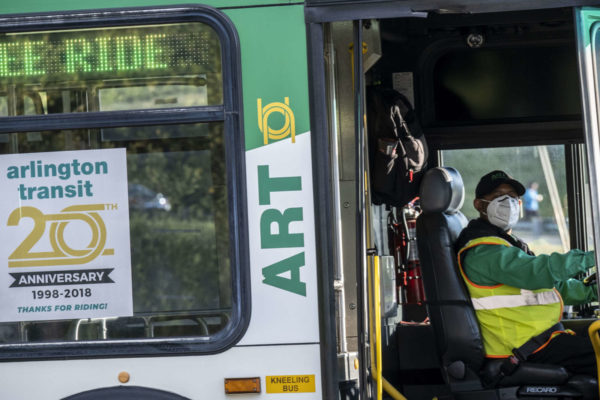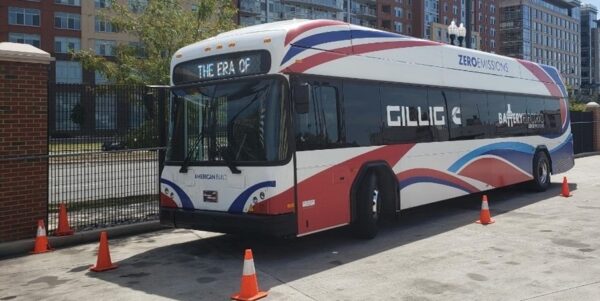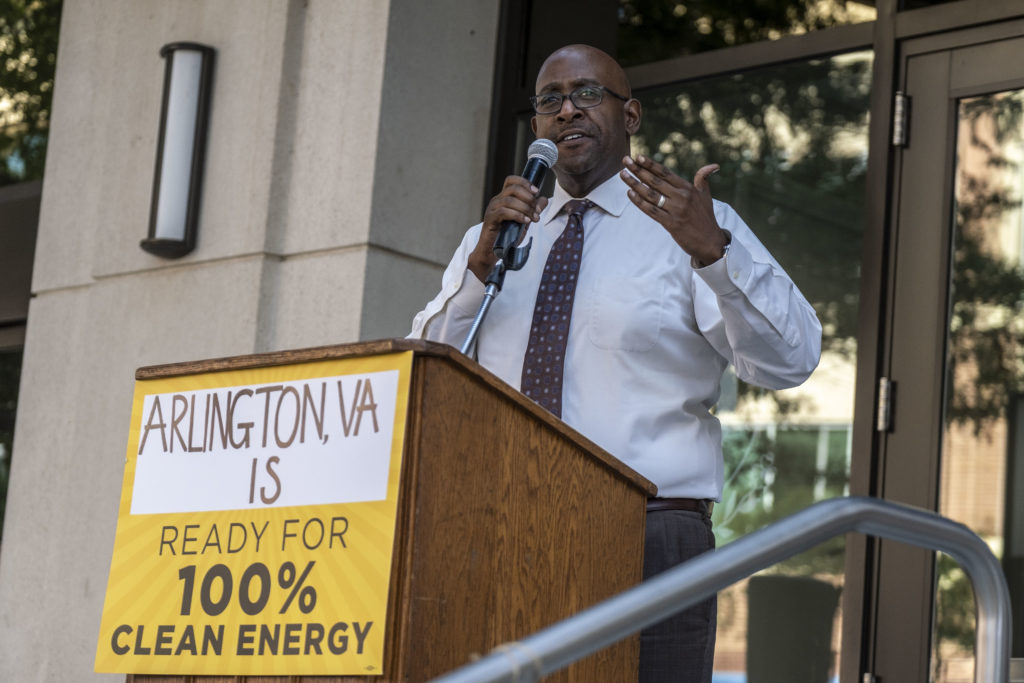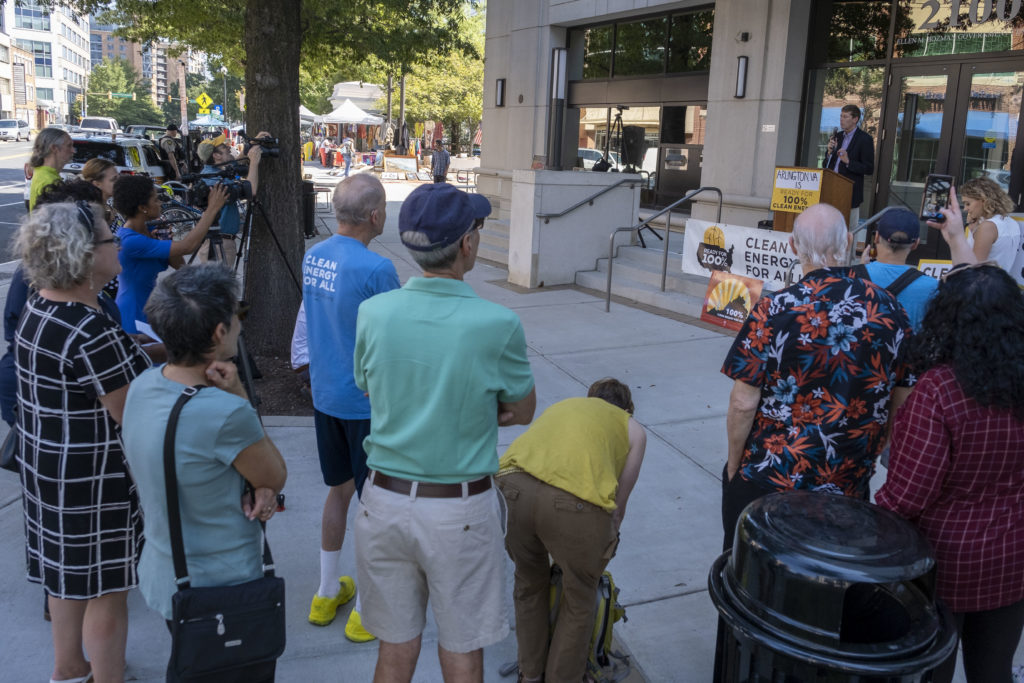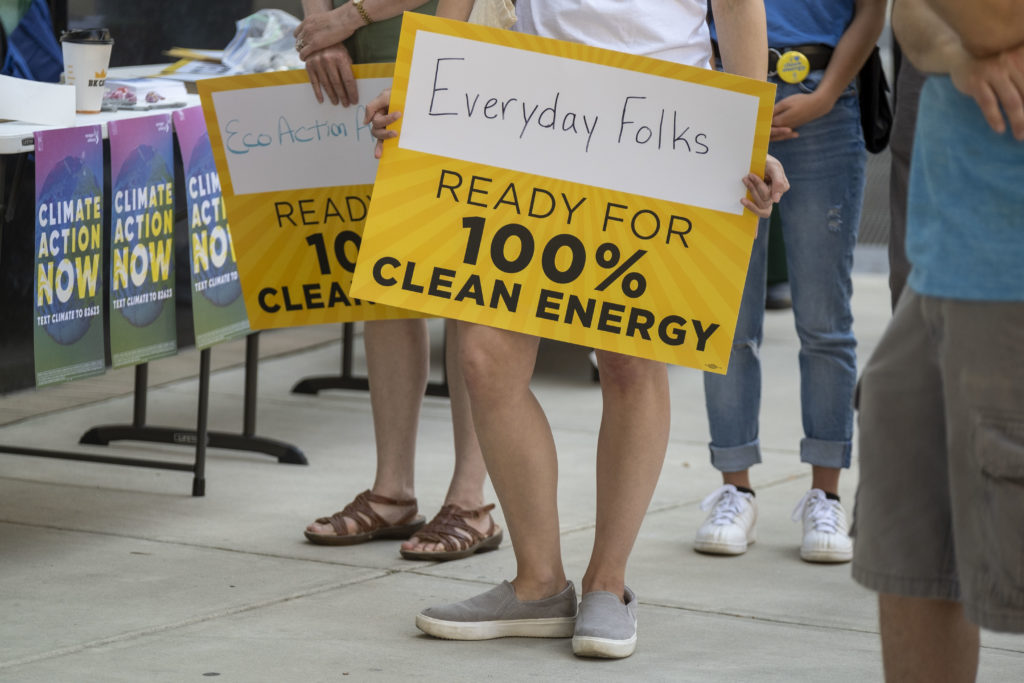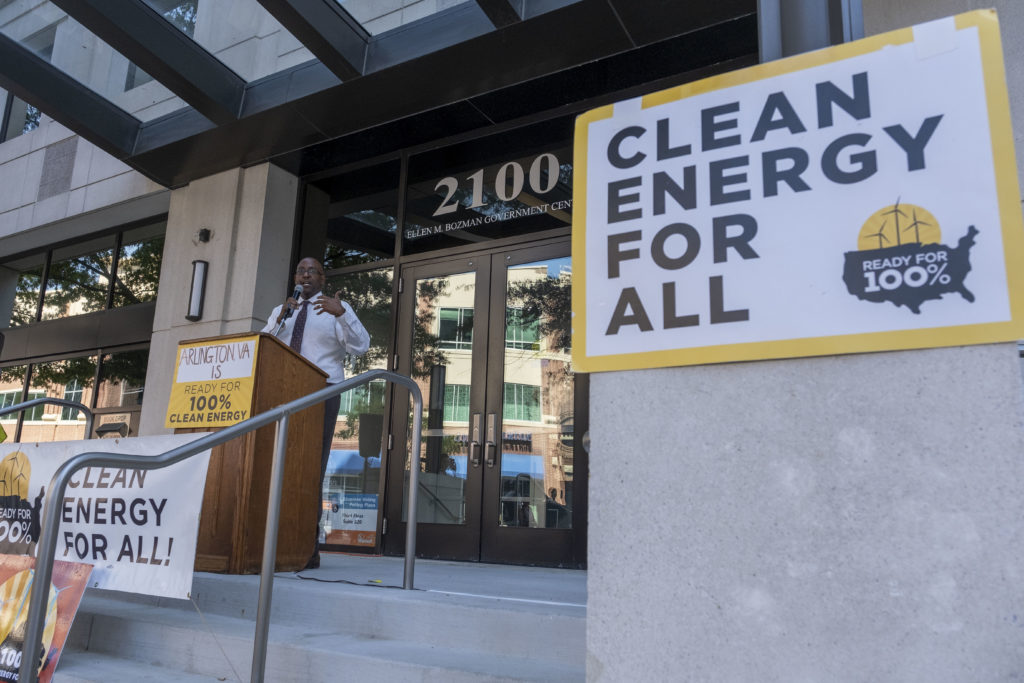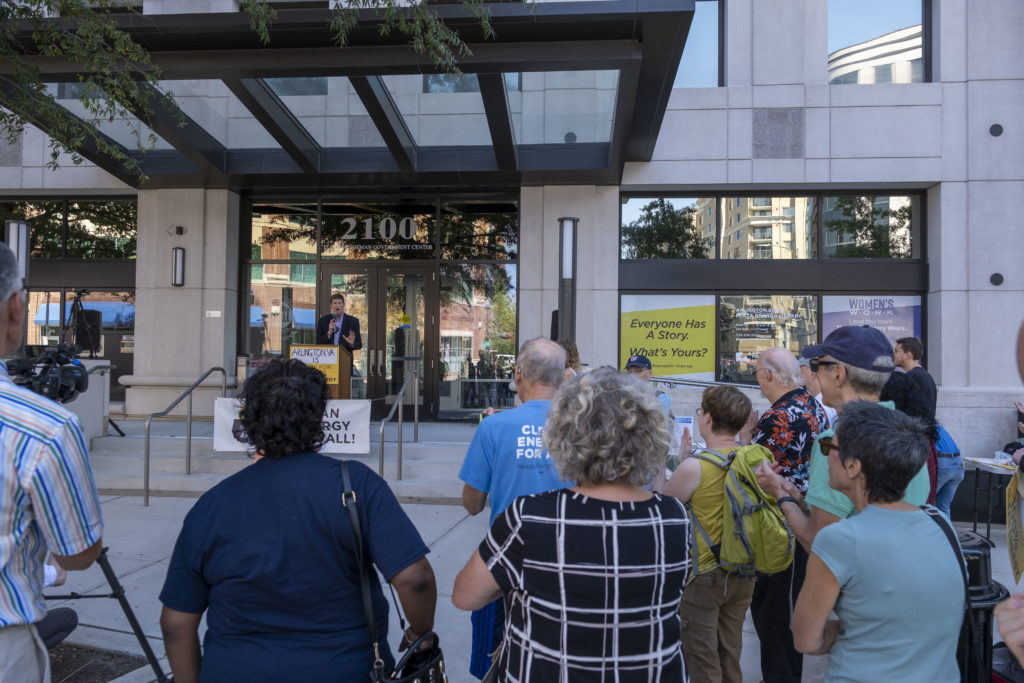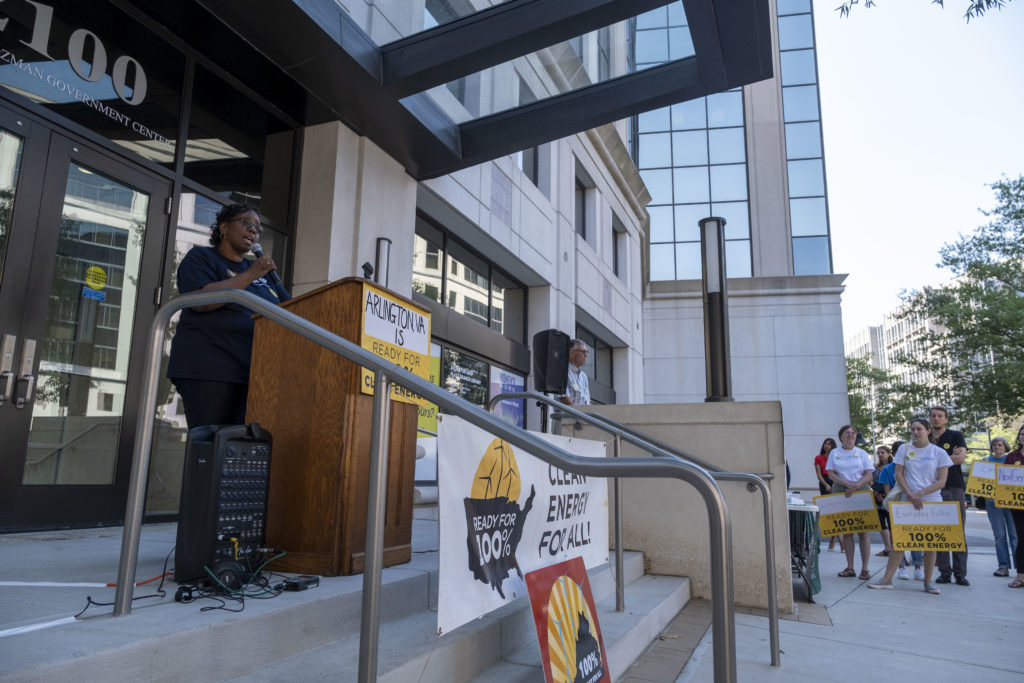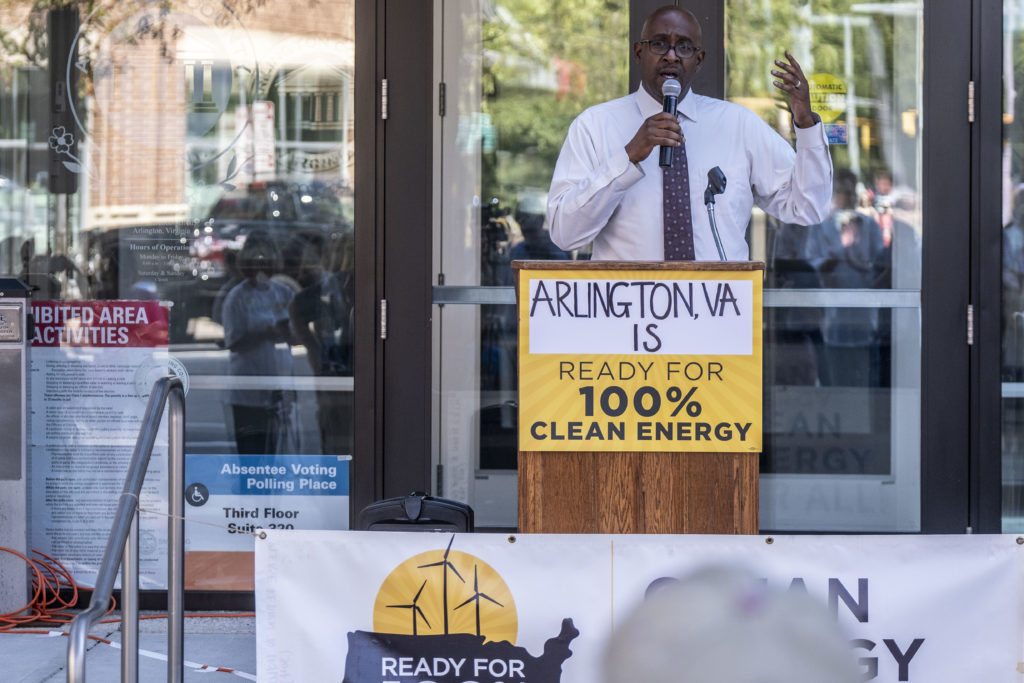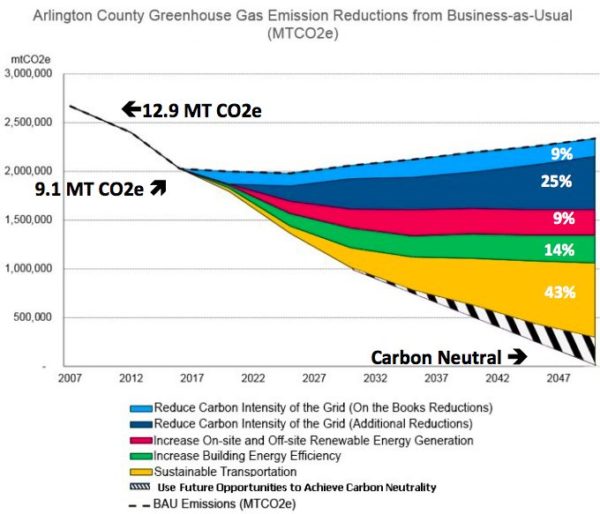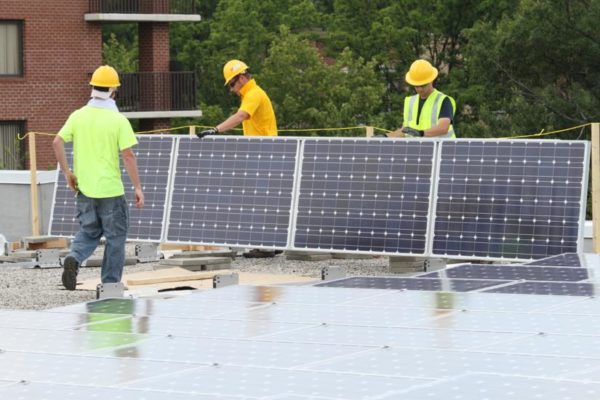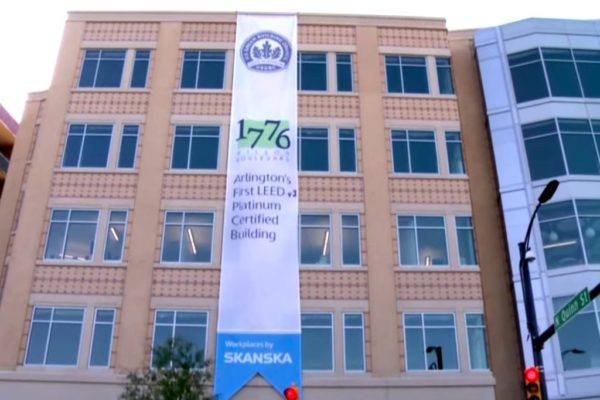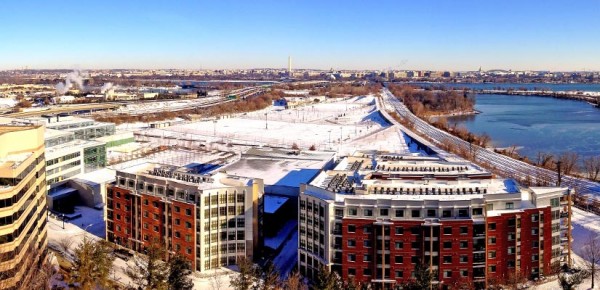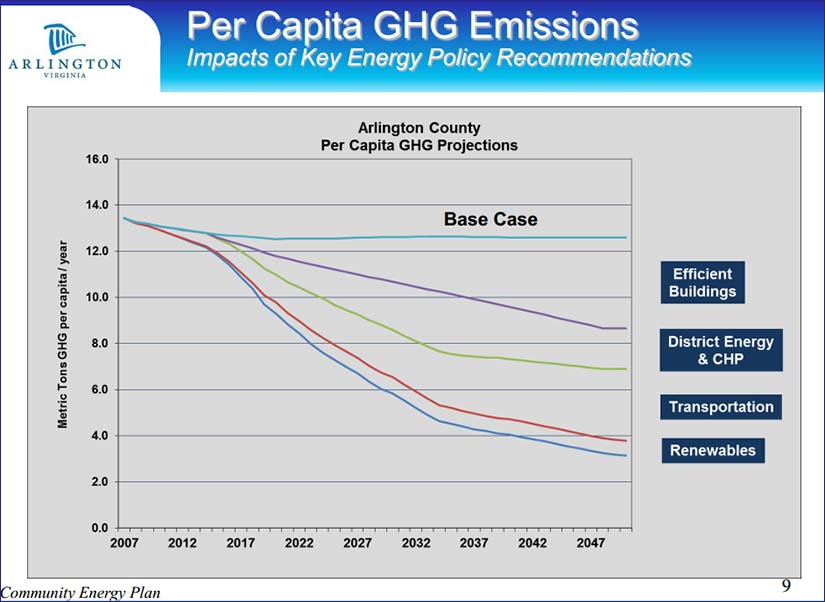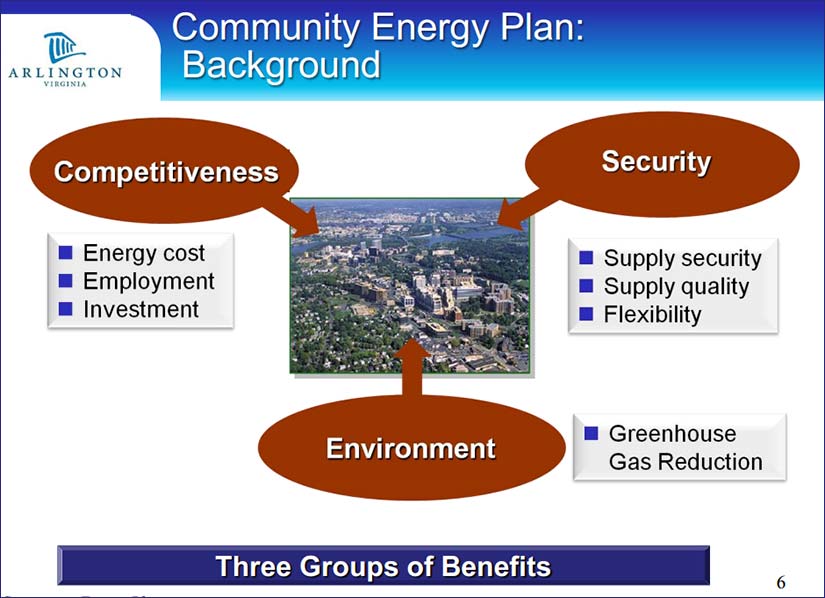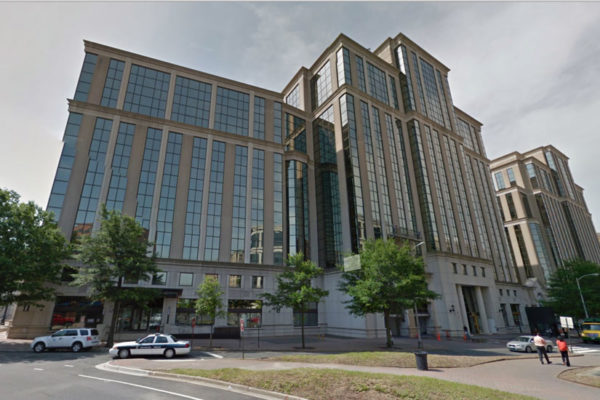
Arlington County operations now run entirely on renewable electricity — a full two years ahead of schedule.
As part of the Community Energy Plan adopted in 2019, Arlington County committed to transitioning 100% of county operations to renewable sources by 2025.
The county said in a press release sent out this morning (Thursday) that its buildings, streetlights and traffic signals, leased facilities and the Water Pollution Control Plant now run on electricity from sustainable sources.
This includes Dominion Energy Virginia’s Green Power program, solar panels and the Arlington-Amazon solar panel field in Pittsylvania County.
This last source up is in large part the reason Arlington met its goal two years early. The Arlington-Amazon solar panel farm in Pittsylvania County, which a Dominion Energy spokeswoman told ARLnow opened “late last year,” provides more than 80% of renewable electricity to Arlington facilities through offsets,
“We set an ambitious goal for net-zero County operations and facilities, as part of our overall Community Energy Plan for a fully carbon-neutral community, and we’ve met it – two years early,” County Board Member Katie Cristol said in a statement. “This exciting milestone is the result of cross-sector partnership, innovative approaches and Arlington’s commitment to doing our local part in addressing the global challenge of climate change.”
More from the press release:
Arlington County has committed to be carbon neutral by 2050 as part of its Community Energy Plan (CEP) by:
- Promoting buildings that are more energy efficient than is required by code.
- Enhancing Arlington’s approach to energy assurance and resiliency for critical services and harnessing the ability of nature to mitigate Arlington’s need for energy.
- Exploring alternative operational and financing mechanisms to support performance- and cost-effective renewable energy options.
- Maximizing the use of walking/biking, transit and use of shared vehicles, including micro-mobility devices, to promote a multimodal approach to transportation.
Arlington’s award-winning Community Energy Plan (CEP) is a long-term vision for transforming how the County generates, uses, and distributes energy. The CEP also aims to provide access to the benefits of clean energy sources for all residents regardless of economic situation.
Per the Community Energy Plan, the way Arlington intended to power all county operations with renewable electricity was through the purchase of power purchase agreements (PPAs). These can be either physical, through solar farms or more local solar panel installations, or virtual, via certificates.
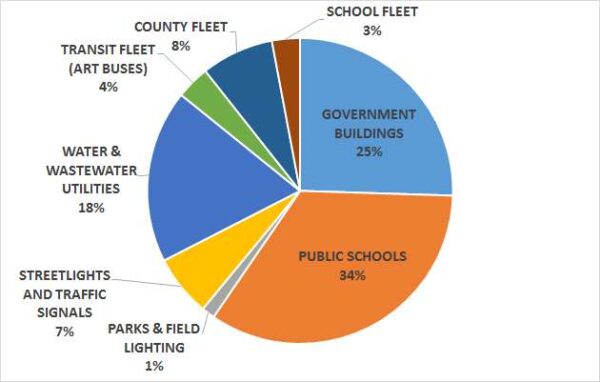
The next milestone in the CEP is powering 100% of Arlington’s electricity with renewable sources by 2035.
The ultimate goal is for the county to be completely carbon neutral by 2050, and the current efforts comprise just 11% of the greenhouse gas emissions reductions Arlington County says it needs to meet the ultimate goal of the Community Energy Plan.
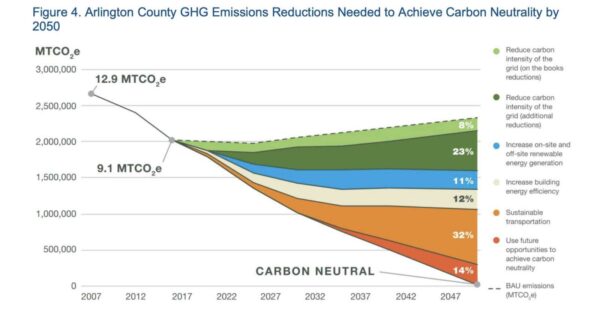
Arlington Public Schools — which contributed the most to Arlington County’s carbon footprint back in 2016 — continues to expand its solar capacity with new rooftop installations, says spokesman Frank Bellavia.
So far, three elementary schools — Alice W. Fleet, Discovery and Cardinal — are considered net-zero in terms of energy usage.
Solar power systems are being designed for Cardinal and Jefferson Middle School, and Bellavia says these should “host solar in the next year.”
“APS anticipates having over 3.4MW of solar capacity when these two schools’ solar arrays are operational,” he said.
Additionally, the school system is working on solar dashboards “so students and staff can use them as teaching and learning opportunities,” he said.
This school year, there are sustainability liaison positions at every school building, up from 10 participating schools when the program began in 2016.
“The Sustainability Liaison Program aims to support teachers at APS by providing a modest stipend in exchange for coordinating and designing sustainability activities that engage students and the APS community,” Bellavia said. “Given the success of the program in its first year, the program has expanded to 38 APS school facilities this year.”


